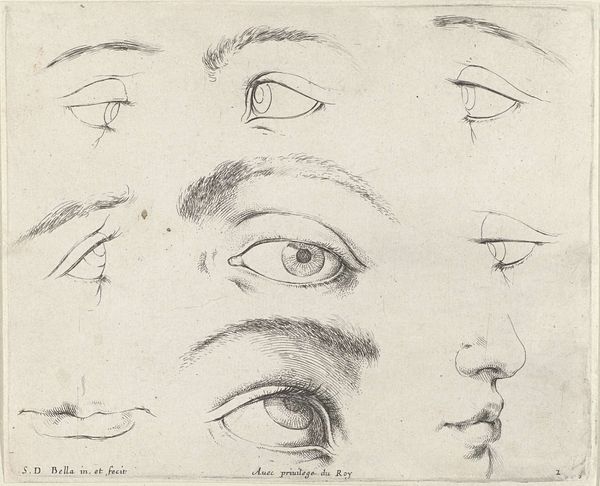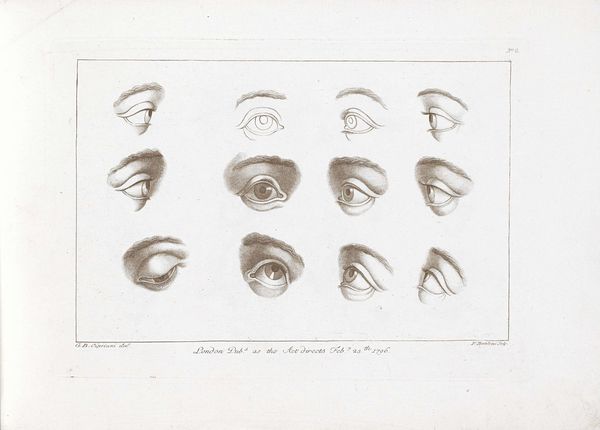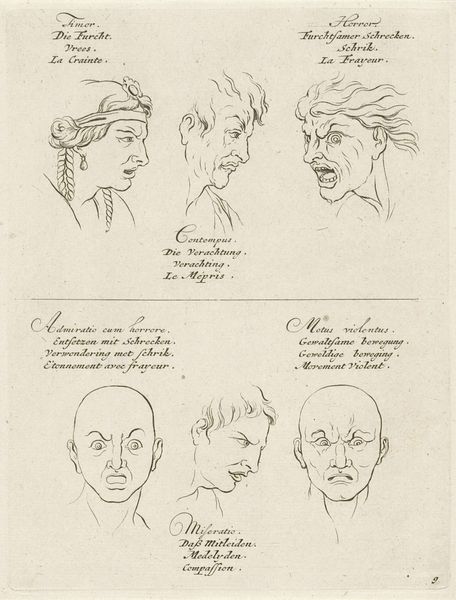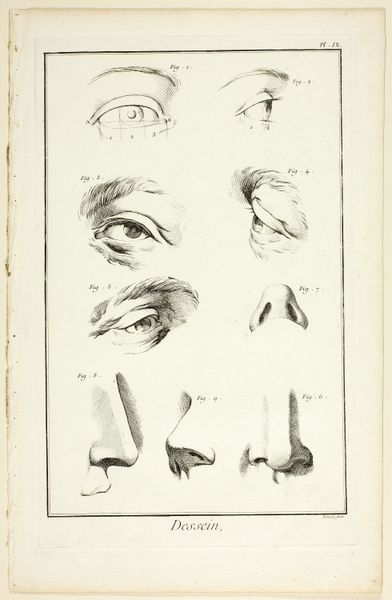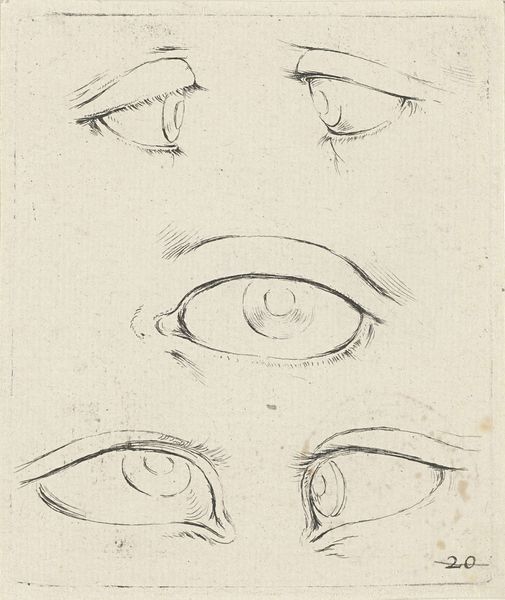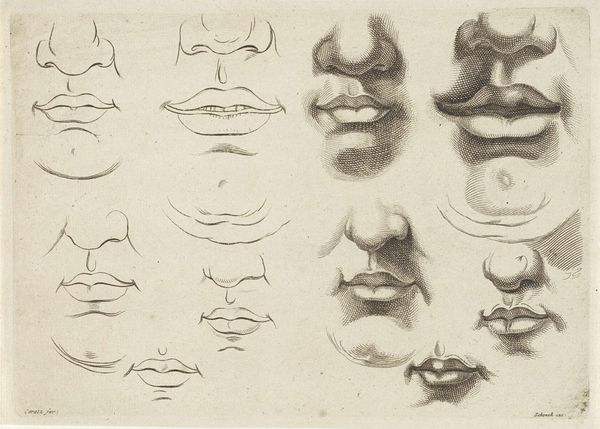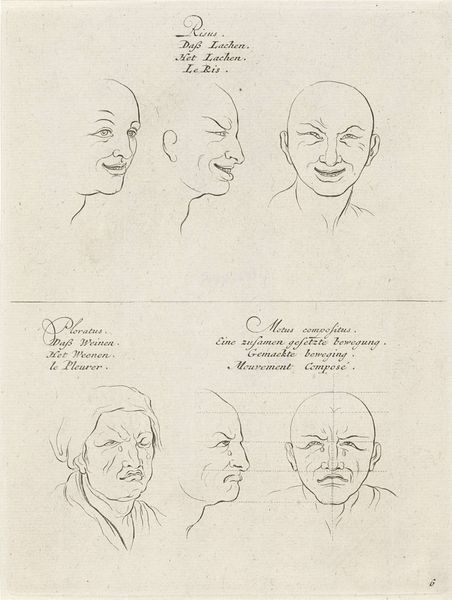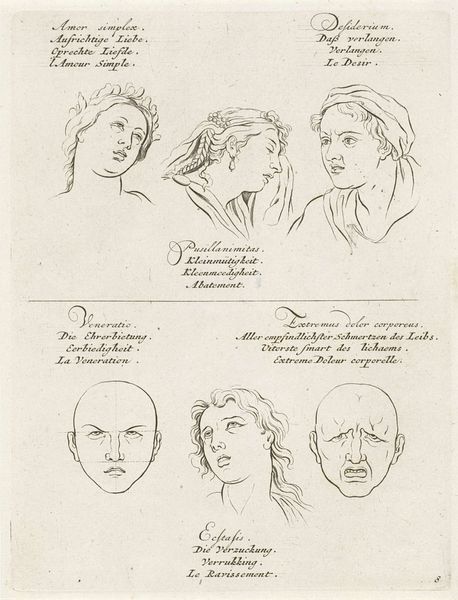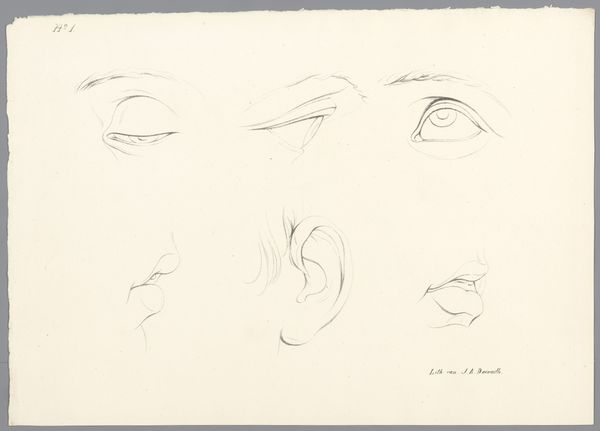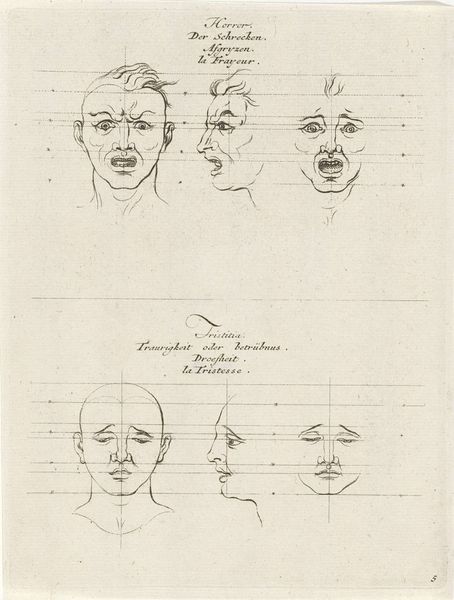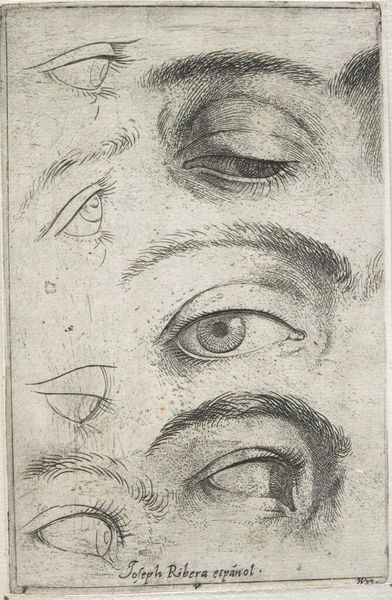
drawing, paper, ink
#
portrait
#
drawing
#
baroque
#
paper
#
ink
#
geometric
#
line
#
academic-art
Dimensions: height 94 mm, width 189 mm
Copyright: Rijks Museum: Open Domain
Curator: Here we have "Studies van menselijke gezichten" – or Studies of Human Faces – a work created with ink on paper sometime between 1710 and 1767, currently residing here at the Rijksmuseum. It is attributed to Leonard Schenk. Editor: It looks like a page from an artist's sketchbook, almost anatomical. The eyes especially…they’re all so slightly different, catching the light at distinct angles. It has an instructive, almost scientific mood about it. Curator: Precisely. The artist is clearly investigating the varied shapes and expressions possible in the human face. Consider how these studies draw on academic artistic traditions focused on the canon of ideal proportions. Each isolated feature—an eye, a nose, lips—becomes an exercise in understanding the subtle nuances of human anatomy. Editor: Do you think that impacts how the subjects, or parts of subjects are depicted? There's almost no personality, no real expression in these studies; they're archetypes, in a way. How might these exercises serve the broader artistic movements of that era? Curator: It's fascinating that you pick up on the lack of personality. The aim was more aligned to achieving mastery in representing the classical ideals. Artists in the baroque tradition would study these, seeking to ground their theatrical and emotional subjects with precision and naturalism. The text "Principe de dessein" at the top means “Principle of Drawing,” reinforcing the academic quality. The geometric line work aims at clarity of form over subjective feeling, to enable other artists studying these models to create a universally appreciated beauty, an aesthetic of authority. Editor: And yet, despite the stated goals, the image seems slightly unsettling today. Those detached eyes staring blankly are uncanny, floating free without context. They reflect how knowledge itself can be disconnected and clinical. Curator: It's a wonderful observation about our contemporary sensibilities. These detached facial components remind us that meaning shifts over time. What was once valued for promoting a specific artistic vision, now prompts more complex reactions. Editor: This piece provides an intriguing look into both the mechanics of artistic training and also reveals changes in cultural taste and the ongoing evolution of seeing and interpreting symbols. Curator: Yes, the way we now project our own anxieties and interpretations onto something meant for pure artistic training is rather revelatory of the place of images in our present culture.
Comments
No comments
Be the first to comment and join the conversation on the ultimate creative platform.

